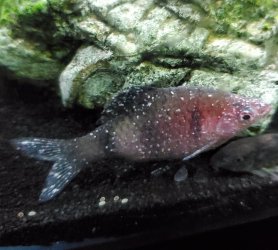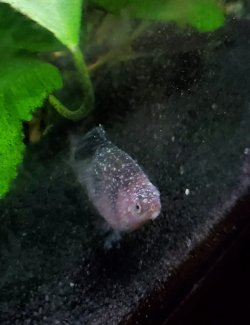Hey guys, I'm not exactly new to the fish hobby, but this... I don't know what to do about this.
This is the worst outbreak of ich I have ever experienced. I've lost half of my tank already. The explosion of infection just seems to be getting worse and I'm running a full gambit of treatments.
Water temp at 86-88 degrees, with salt added, and today will get the 2nd dose of API Super Ick Cure. Salt was added 4 days ago as soon as I saw this becoming an issue, as well as some older medicine I had, the Jungle ick tablets that have worked fine before on small outbreaks. Then 2 days later the temperature was pumped up and I purchased the API meds, assuming the other maybe was too old and the infection was getting way out of hand. (Did a couple of 20% water changes and left a carbon filter in for about 12 hrs between these two medication uses to try and take out some of the original medication and not overdose the tank. Carbon filter was removed again when the new meds went in.)
This morning after another night of hoping to see some improvement, it's still spreading and fish that only showed a couple of the typical little white spots are wearing more of them as well as another casualty.
These two are the worst off of the tank, they're covered head to tail and they brought it into the tank. I thought maybe it was velvet which I've never encountered but it looks just like ich to me. I haven't started the second dose of the API meds yet, that comes later today, but they're technically half a week into treating and it's still getting worse.


Should I be treating for something else? Is this the super resistant ich that I've heard lives in FL? I'd love some help on direction or if I've misdiagnosed. I can get more pictures if needed. Thanks in advance.
This is the worst outbreak of ich I have ever experienced. I've lost half of my tank already. The explosion of infection just seems to be getting worse and I'm running a full gambit of treatments.
Water temp at 86-88 degrees, with salt added, and today will get the 2nd dose of API Super Ick Cure. Salt was added 4 days ago as soon as I saw this becoming an issue, as well as some older medicine I had, the Jungle ick tablets that have worked fine before on small outbreaks. Then 2 days later the temperature was pumped up and I purchased the API meds, assuming the other maybe was too old and the infection was getting way out of hand. (Did a couple of 20% water changes and left a carbon filter in for about 12 hrs between these two medication uses to try and take out some of the original medication and not overdose the tank. Carbon filter was removed again when the new meds went in.)
This morning after another night of hoping to see some improvement, it's still spreading and fish that only showed a couple of the typical little white spots are wearing more of them as well as another casualty.
These two are the worst off of the tank, they're covered head to tail and they brought it into the tank. I thought maybe it was velvet which I've never encountered but it looks just like ich to me. I haven't started the second dose of the API meds yet, that comes later today, but they're technically half a week into treating and it's still getting worse.


Should I be treating for something else? Is this the super resistant ich that I've heard lives in FL? I'd love some help on direction or if I've misdiagnosed. I can get more pictures if needed. Thanks in advance.
Last edited:


